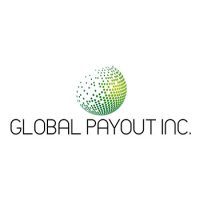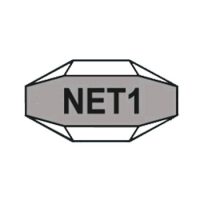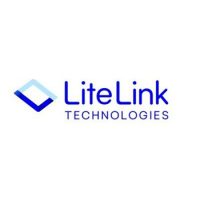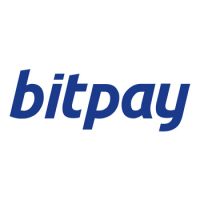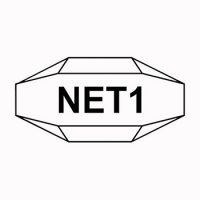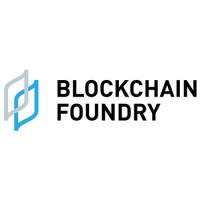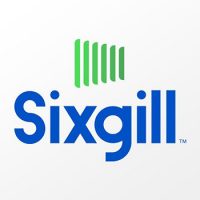Blockchain Press Releases
Embedded AI Market worth $18.0 billion by 2028 – Exclusive Report by MarketsandMarkets™
CHICAGO, June 22, 2023 /PRNewswire/ — Because of rising demand for smart devices and IoT, advancements in AI technology, the rise of edge computing, the development of autonomous systems, applications across various sectors, miniaturisation and energy efficiency, and the importance of data privacy and security, the future of the Embedded AI market appears promising. As AI becomes an intrinsic aspect of embedded systems, boosting their functionality and decision-making skills, this industry is likely to increase significantly.
The global Embedded AI Market is projected to grow from USD 9.4 billion in 2023 to USD 18.0 billion by 2028 at a compound annual growth rate (CAGR) of 14.0% during the forecast period, according to a new report by MarketsandMarkets™. The Embedded AI Market is expected to grow significantly during the forecast period, owing to various business drivers like growing demand for intelligent and autonomous systems for a personalized experience and increasing advancements in AI and ML technologies for better and smart decisions. Furthermore, the proliferation of connected devices and IoT ecosystem for effective communications and the rising usage of Embedded AI for industry-specific applications drive market growth.
Browse in-depth TOC on “Embedded AI Market“
271 – Tables
55 – Figures
320 – Pages
Download PDF Brochure @ https://www.marketsandmarkets.com/pdfdownloadNew.asp?id=261207150
Scope of the Report
|
Report Metrics |
Details |
|
Market size available for years |
2017–2028 |
|
Base year considered |
2022 |
|
Forecast period |
2023–2028 |
|
Forecast units |
USD (Billion) |
|
Segments covered |
Offering, Data Type, Vertical, and Region |
|
Geographies covered |
North America, Asia Pacific, Europe, the Middle East & Africa, and Latin America |
|
Companies covered |
Google (US), IBM (US), Microsoft (US), AWS (US), NVIDIA (US), Intel (US), Qualcomm (US), Arm (UK), AMD (US), MediaTek (Taiwan), Oracle (US), Salesforce (US), NXP (Netherlands), Lattice (Oregon), Octonion (Switzerland), NeuroPace (US), Siemens (Germany), HPE (US), LUIS Technology (Germany), Code Time Technologies (Canada), HiSilicon (China), VectorBlox (Canada), Au-Zone Technologies (Canada), STMicroelectronics (Switzerland), SenseTime (Hong Kong), Edge Impulse (US), Perceive (US), Eta Compute (US), SensiML (US), Syntiant (US), Graphcore (UK), and SiMa.ai (US). |
By offering, Services to register for the highest CAGR during the forecast period
The scope of the services segment comprises training and consulting, system integration and implementation, and support and maintenance. The services segment of the Embedded AI Market is growing rapidly as businesses increasingly look to outsource the development and deployment of AI solutions. This is due to a number of factors, including the complexity of developing AI-powered applications, the need for specialized expertise, and the high cost of in-house development. Businesses looking to adopt AI should consider the services segment as a viable option for developing and deploying AI solutions.
By data type, numeric data to register for the highest market size during the forecast period
The increasing demand for real-time data processing and analysis boosts the demand for numeric data type in the Embedded AI Market. Numeric data plays a crucial role in the Embedded AI Market, forming the foundation for training, optimizing, and deploying AI models on embedded systems. Numeric data captured by sensors, cameras, or other sources in real-time serves as input to the deployed AI models, allowing them to process the data and generate actionable outputs promptly. This is crucial for robotics, autonomous vehicles, or industrial automation applications, where quick decision-making is required.
Request Sample Pages @ https://www.marketsandmarkets.com/requestsampleNew.asp?id=261207150
By region, Asia Pacific to account for the highest growth rate during the forecast period
Embedded AI adoption in the Asia Pacific region is experiencing significant growth. It is driven by several factors, including the region’s strong manufacturing base, rapid urbanization, increasing demand for IoT applications, and advancements in AI technologies. With strong government support, a thriving startup ecosystem, and investments in AI infrastructure, the Asia Pacific market presents significant growth opportunities for Embedded AI technologies and solutions.
Top Key Companies in Embedded AI Market:
Some major players in the Embedded AI Market include Google (US), IBM (US), Microsoft (US), AWS (US), NVIDIA (US), Intel (US), Qualcomm (US), Arm (UK), AMD (US), MediaTek (Taiwan), Oracle (US), Salesforce (US), NXP (The Netherlands), Lattice (US), Octonion (Switzerland), NeuroPace (US), Siemens (Germany), HPE (US), LUIS Technology (Germany), Code Time Technologies (Canada), HiSilicon (China), VectorBlox (Canada), AU-Zone Technologies (Canada), STMicroelectronics (Switzerland), SenseTime (Hong Kong), Edge Impulse (US), Perceive (US), Eta Compute (US), SensiML (US), Syntiant (US), Graphcore (UK), and SiMa.ai (US).
Recent Developments:
- In April 2023, IBM announced the launch of Watson Edge for Financial Services, a solution that helps financial institutions deploy AI at the edge to improve customer service, fraud detection, and risk management.
- In April 2023, Qualcomm Technologies partnered with eInfochips, an Arrow company, to launch Edge Labs. Edge Labs is a program that will help developers and innovators accelerate the development and deployment of AI applications for embedded devices. This partnership will help developers and innovators accelerate developing and deploying AI applications for embedded devices. Edge Labs will provide developers with access to Qualcomm’s expertise in AI and eInfochips’ development and deployment services.
- In March 2023, Arm partnered with Google Cloud to bring Arm-based solutions to the Google Cloud Platform (GCP). The partnership is expected to help Arm customers take advantage of GCP’s AI and machine learning capabilities and to help Google Cloud customers deploy Arm-based solutions.
- In March 2023, IBM acquired Instana, an application performance monitoring software provider. The acquisition will help IBM to expand its edge AI capabilities and provide customers with a more comprehensive view of their applications.
- In March 2023, the AI-powered tool has been designed to assist Microsoft 365 users in performing various tasks, such as troubleshooting, training, and onboarding. Microsoft 365 Copilot, as an embedded AI technology, is integrated within a broader software ecosystem and has been created to function seamlessly with other Microsoft 365 products and services.
- In October 2022, Intel partnered with Amazon Web Services (AWS) to bring Intel-based solutions to AWS. The partnership is expected to help Intel customers use AWS’s AI and machine learning capabilities to help AWS customers deploy Intel-based solutions.
- In June 2022, Microsoft announced a partnership with NVIDIA to accelerate the development and deployment of edge AI applications. The partnership will combine Microsoft’s Azure platform with NVIDIA’s AI hardware and software to create a more comprehensive solution for edge computing.
- In Jan 2022, IBM partnered with Google Cloud to accelerate the development and deployment of edge AI applications. The partnership will combine IBM’s AI and ML expertise with Google Cloud’s infrastructure and AI capabilities.
Inquiry Before Buying @ https://www.marketsandmarkets.com/Enquiry_Before_BuyingNew.asp?id=261207150
Embedded AI Market Advantages:
- Sensitive data no longer needs to be sent to external servers or the cloud for processing thanks to embedded AI. Data can be maintained on the device or on a private network by performing AI computations locally, boosting privacy and lowering the possibility of data breaches or unauthorised access. For applications that deal with sensitive data, such those in healthcare or banking, this is essential.
- Data communication to remote servers is not necessary because embedded AI processes data on the device itself. This allows for quicker response times and considerably lowers latency. When compared to conventional computing architectures, embedded AI also enables optimised hardware-software integration by utilising specialised chips or accelerators to achieve improved speed and energy efficiency.
- By incorporating AI capabilities directly into devices, no additional infrastructure or cloud-based resources are required. This saves operational costs while simplifying deployment. Furthermore, because the intelligence is dispersed across several devices rather than depending on a centralised server architecture, embedded AI systems grow readily. Because of its scalability and low cost, embedded AI is an appealing solution for both small-scale and large-scale deployments.
- Embedded AI enables edge devices to make intelligent decisions on their own without relying on ongoing contact with central servers. This provides edge intelligence and autonomy, allowing devices to analyse and respond to data locally, resulting in faster and more efficient operations. Edge intelligence is especially useful in settings requiring real-time judgements, such as autonomous drones or smart manufacturing.
- By analysing data locally and customising the experience to each user’s preferences and behaviours, embedded AI can enhance user interactions. This makes it possible for devices to offer personalised recommendations, predictive ideas, and customised interactions, improving user engagement and pleasure.
- Through resource management and local computing, embedded AI systems can reduce their overall energy usage. Embedded AI devices can work effectively with lower energy requirements by minimising the need for data transmission and decreasing dependency on power-hungry cloud servers. For devices like wearables or IoT sensors that run on batteries or have limited resources, this is especially advantageous.
- Devices with inbuilt AI may carry out complicated calculations locally without largely relying on cloud resources or constant network connectivity. As a result, embedded AI solutions are more readily available and reasonably priced for both organisations and consumers. This decreases network dependence and associated costs. It also makes applications possible in rural or unconnected settings where cloud connectivity can be expensive or scarce.
Report Objectives
- To define, describe, and predict the Embedded AI Market by offering (hardware, software, and services), data type, vertical, and region
- To provide detailed information related to major factors (drivers, restraints, opportunities, and industry-specific challenges) influencing the market growth
- To analyze the micro markets with respect to individual growth trends, prospects, and their contribution to the total market
- To analyze the opportunities in the market for stakeholders by identifying the high-growth segments of the Embedded AI Market
- To analyze opportunities in the market and provide details of the competitive landscape for stakeholders and market leaders
- To forecast the market size of segments for five main regions: North America, Europe, Asia Pacific, Middle East & Africa, and Latin America
- To profile key players and comprehensively analyze their market rankings and core competencies
- To analyze competitive developments, such as partnerships, new product launches, and mergers and acquisitions, in the Embedded AI Market
- To analyze the impact of recession across all the regions across the Embedded AI Market
Browse Adjacent Markets: Artificial Intelligence (AI) Market Research Reports & Consulting
Related Reports:
AI as a Service Market – Global Forecast to 2028
NLP in Education Market – Global Forecast to 2028
Text to Video AI Market – Global Forecast to 2027
Artificial Intelligence Market – Global Forecast to 2027
Cognitive Computing Market– Global Forecast to 2025
About MarketsandMarkets™
MarketsandMarkets™ is a blue ocean alternative in growth consulting and program management, leveraging a man-machine offering to drive supernormal growth for progressive organizations in the B2B space. We have the widest lens on emerging technologies, making us proficient in co-creating supernormal growth for clients.
The B2B economy is witnessing the emergence of $25 trillion of new revenue streams that are substituting existing revenue streams in this decade alone. We work with clients on growth programs, helping them monetize this $25 trillion opportunity through our service lines – TAM Expansion, Go-to-Market (GTM) Strategy to Execution, Market Share Gain, Account Enablement, and Thought Leadership Marketing.
Built on the ‘GIVE Growth’ principle, we work with several Forbes Global 2000 B2B companies – helping them stay relevant in a disruptive ecosystem. Our insights and strategies are molded by our industry experts, cutting-edge AI-powered Market Intelligence Cloud, and years of research. The KnowledgeStore™ (our Market Intelligence Cloud) integrates our research, facilitates an analysis of interconnections through a set of applications, helping clients look at the entire ecosystem and understand the revenue shifts happening in their industry.
To find out more, visit www.MarketsandMarkets™.com or follow us on Twitter, LinkedIn and Facebook.
Contact:
Mr. Aashish Mehra
MarketsandMarkets™ INC.
630 Dundee Road
Suite 430
Northbrook, IL 60062
USA: +1-888-600-6441
Email: [email protected]
Research Insight: https://www.marketsandmarkets.com/ResearchInsight/embedded-ai-market.asp
Visit Our Website: https://www.marketsandmarkets.com/
Content Source: https://www.marketsandmarkets.com/PressReleases/embedded-ai.asp
Logo: https://mma.prnewswire.com/media/660509/MarketsandMarkets_Logo.jpg
View original content:https://www.prnewswire.co.uk/news-releases/embedded-ai-market-worth-18-0-billion-by-2028—exclusive-report-by-marketsandmarkets-301857895.html

Blockchain
Blocks & Headlines: Today in Blockchain – May 30, 2025 (Fraser Edwards, Kyiv NFT, Spirit Blockchain Capital, Indian eHealth, Hedera)

Blockchain technology and cryptocurrencies continue to redefine industries—from competitive gaming and cultural heritage preservation to corporate finance, healthcare, and alternative tokens. Today’s briefing highlights five pivotal developments shaping the ecosystem: Fraser Edwards’s vision for trust in eSports; Ukraine’s wartime cultural preservation via NFTs; Spirit Blockchain Capital’s Q1 2025 operational report; India’s push for blockchain-enabled electronic health records (EHRs); and the rise of viral altcoins such as UniLabs, Sui, and Hedera Hashgraph. Together, these stories illustrate the themes of trust and identity, preservation and provenance, institutional maturation, public-sector innovation, and token diversification. In this op-ed–style round-up, we distill the essence of each story, cite sources, and offer analysis on how they advance Web3, DeFi, and NFT frontiers.
1. Rebuilding Trust in eSports: Can Blockchain Fix Competitive Integrity?
Source: CCN
Summary:
In a recent CCN interview, veteran trader and eSports investor Fraser Edwards argues that blockchain’s immutable ledgers can restore credibility in the rapidly commercializing world of competitive gaming. According to Edwards, match-fixing scandals and opaque prize-pool distributions have eroded fan confidence. By tokenizing tournament entries and payouts on public blockchains—complete with smart-contract–enforced escrow—organizers can guarantee that prize monies are distributed exactly as advertised, and that no post-match manipulation occurs. Tournament operators in Asia and North America are already piloting Ethereum-based payout dApps, aiming to increase transparency for players and sponsors alike.
Key details & analysis:
-
Smart-contract escrow: Funds are held in a time-locked contract that releases prize money only upon verifiable match results. This prevents disputes over referee decisions or delayed payments.
-
On-chain reputation: Player and team reputations can be tokenized via non-fungible reputation badges that accrue based on fair play and community votes—discouraging cheating.
-
Scalability concerns: High-traffic tournaments may require Layer 2 rollups or alternative chains (e.g., Polygon, Immutable X) to reduce gas costs and latency.
Opinion: Blockchain’s dual promise of provable fairness and programmable finance makes it uniquely suited to eSports. Yet adoption hinges on UX: seamless wallet integrations, minimal transaction fees, and clear regulatory guidance on esports tokens.
2. When Art Meets Blockchain: Ukraine’s Wartime Cultural Preservation
Source: The Kyiv Independent
Summary:
As monuments crumble under artillery fire, Ukrainian curators and technologists are partnering to mint NFTs representing lost or endangered artifacts. The Kyiv Independent reports that the National Art Museum of Ukraine has launched “Project Phoenix,” tokenizing high-resolution 3D scans of sculptures, manuscripts, and paintings. Proceeds from initial sales fund restoration and digital archiving efforts. Each NFT embeds provenance metadata—including GPS coordinates, curator notes, and condition reports—ensuring that future generations can verify authenticity and context, even if the physical artifact is destroyed.
Key details & analysis:
-
Metadata richness: Beyond simple ownership, NFTs store structured metadata—using ERC-721 metadata extensions—that capture curatorial insights and conservation logs.
-
Decentralized archives: IPFS and Arweave are employed to host ultra-high-resolution imagery, with on-chain hashes guaranteeing data integrity.
-
Community engagement: Fractional-NFT drops allow diaspora communities to collectively own tokens, strengthening cultural ties and crowdfunding preservation.
Opinion: Blockchain’s ability to immutable record heritage provides a lifeline for war-torn nations. However, ensuring that local institutions retain governance over metadata edits and future migrations is critical to avoiding “cultural colonialism” by global NFT marketplaces.
3. Spirit Blockchain Capital’s Q1 2025 Highlights: Growth, Investments, and Outlook
Source: GlobeNewswire
Summary:
Spirit Blockchain Capital’s Q1 2025 report benchmarks the firm’s operational milestones and financial performance. Assets under management (AUM) climbed 45% to $1.02 billion, driven by strategic allocations to top-tier Layer 1 and Layer 2 protocols, DeFi liquidity pools, and a newly launched token-index fund. Operating income rose 37%, fueled by management fees and performance incentives. The firm also closed its second blockchain-focused venture fund at $150 million, earmarked for early-stage Web3 projects in gaming, infrastructure, and decentralized identity.
Key details & analysis:
-
Diversification strategy: 60% of AUM in blue-chip cryptocurrencies (Bitcoin, Ethereum); 25% in DeFi (Aave, Uniswap, Lido); 15% in tokenized commodities and NFTs.
-
Fund performance: The flagship fund delivered a 9.8% return in Q1, outperforming the 6.2% benchmark set by the Bloomberg Galaxy Crypto Index.
-
Venture investments: Early stakes in zero-knowledge proof startups and decentralized storage platforms signal confidence in scalability and privacy innovations.
Opinion: Spirit’s robust growth and disciplined diversification mirror institutional maturation in the blockchain asset management space. As regulatory clarity improves, expect further inflows from endowments, pensions, and family offices.
4. Blockchain EHRs in India: The Next Digital Health Revolution
Source: ORF
Summary:
The Observer Research Foundation (ORF) details India’s pioneering pilot of blockchain-backed electronic health records (EHRs) in the state of Andhra Pradesh. By leveraging a permissioned Hyperledger Fabric network, the initiative ensures that patient records—from vaccination histories to diagnostic imaging—are securely shared across hospitals, clinics, and pharmacies. Patients control access via digital identities anchored to India’s Aadhaar system, granting temporal permissions for data viewing and preventing unauthorized sharing.
Key details & analysis:
-
Interoperability: HL7 FHIR standards are mapped to on-chain transactions, enabling seamless data exchange with existing hospital information systems (HIS).
-
Privacy safeguards: Off-chain storage of PHI (Protected Health Information) is encrypted with patient-held keys; only hashed pointers reside on-chain to ensure immutability without exposing sensitive data.
-
Regulatory alignment: The pilot aligns with India’s draft Digital Health Act, which emphasizes data sovereignty and patient consent frameworks.
Opinion: Blockchain EHRs can democratize healthcare access in a populous nation—but success depends on user-friendly portals, robust identity verification, and contingency plans for network outages in rural areas.
5. The Hottest Viral Altcoins of 2025: UniLabs, Sui, and Hedera Lead the Pack
Source: TronWeekly
Summary:
According to TronWeekly, the altcoin landscape in 2025 is dominated by three viral tokens: UniLabs (UNI-L), Sui (SUI), and Hedera Hashgraph (HBAR). UniLabs, a governance token for a decentralized laboratory network, saw a 1,200% year-to-date surge on news of its AI-driven drug-discovery partnership. Sui’s Move-based smart-contract platform gained traction for sub-second finality and low gas fees, with total value locked (TVL) surpassing $2 billion. Hedera’s HBAR continues its enterprise pivot, securing multi-year agreements with global brands for identity verification and supply-chain tracking.
Key details & analysis:
-
UniLabs use case: Token holders vote on research grants and share in royalty revenues from patented compounds developed on-chain.
-
Sui performance: With a novel object model and horizontal sharding, Sui supports over 3,000 TPS (transactions per second) without compromising on decentralization.
-
Hedera enterprise: The Governing Council—comprising Boeing, Google, and LG—bolsters confidence in HBAR’s governance model and paves the way for compliant enterprise deployments.
Opinion: These tokens exemplify the diversification of blockchain applications. Investors should assess not only market hype but also protocol fundamentals—developer activity, economic incentives, and real-world adoption.
Cross-Story Trends & Key Takeaways
-
Trust & Transparency at the Core
From esports prize-pool ledgers to wartime NFT archives and permissioned health records, blockchain’s immutability fosters verifiable trust—a prerequisite for mainstream adoption across sectors. -
Institutional & Public-Sector Innovation
Spirit Blockchain Capital’s fund growth and India’s EHR pilot signal that both private and government entities view blockchain as a strategic infrastructure, not just speculative assets. -
Vertical Specialization Fuels Token Growth
Viral altcoins like UniLabs, Sui, and Hedera thrive by addressing niche use-cases—governance in biotech, scalable DeFi rails, and enterprise identity—underscoring the importance of purpose-built protocols. -
Metadata & Provenance Drive NFTs Beyond Art
Ukraine’s cultural NFTs demonstrate how rich on-chain metadata can preserve heritage, while esports applications show that reputation tokens can enforce fair-play credentials. -
Ecosystem Maturation Requires UX & Governance
Across all stories, user experience—wallet onboarding, identity verification, metadata curation—and robust governance frameworks (tokenomics, regulatory alignment) emerge as decisive factors in blockchain’s next wave.
Conclusion
Today’s blockchain headlines reveal a maturing ecosystem where trust, transparency, and targeted innovation unlock new frontiers—from safeguarding digital heritage amid conflict to revolutionizing healthcare and sports. As institutional players allocate billions, and public-sector pilots chart regulatory pathways, the fate of tomorrow’s Web3 landscape hinges on seamless UX, rigorous governance, and demonstrable real-world utility. Stay tuned for tomorrow’s Blocks & Headlines, where we’ll continue tracking the trends, tokens, and technologies that define the blockchain revolution.
The post Blocks & Headlines: Today in Blockchain – May 30, 2025 (Fraser Edwards, Kyiv NFT, Spirit Blockchain Capital, Indian eHealth, Hedera) appeared first on News, Events, Advertising Options.
Blockchain Press Releases
Bybit Earnival Unlocks 4 Weeks of Golden Rewards

DUBAI, UAE, May 30, 2025 /PRNewswire/ — Bybit, the world’s second-largest cryptocurrency exchange by trading volume, is excited to raise the stakes for Bybit Earn users in a four-week long rewards program, the Bybit Earnival. From now to June 22, eligible Bybit users may sign up for the event for a chance to earn up to 555% APR and Gold Tokens.
With paradigm shifts taking place in the global investment landscape, Bybit Earn offers a wide range of yield-bearing products catered to the diverse needs of traders. The offerings unlock access to beginner products with guaranteed returns such as flexible staking, advanced savings products at various risk levels, and tokenized real-world assets including XAUT, a digital token backed by physical solid gold.
For four weeks in a row, Bybit users may check into Bybit Earn for a rewarding experience packed with exclusive perks:
- New User Exclusives: Users new to Bybit Earn can enjoy a boost for Fixed Savings products of up to 555% APR on USDT. The offer applies in the first two days after their initial deposit and staking of 100 to 300 USDT.
- Extra APR Savings Products Every Week: Limited-time savings products with highly competitive APRs, starting at 500 USDT in net deposit, are refreshed daily at 6 AM UTC, with new offers launching every Monday at midnight.
- Weekly Leaderboard Prize: Participants who acquire 3,000 USDT or more weekly in eligible Earn products can compete on the weekly leaderboard to win up to 1,000 USDT in Gold Tokens. Rankings update daily, and rewards are distributed within 7–14 days.
The event is open to verified retail customers with Savings service enabled on Bybit to ensure a fair and even level competition.
Bybit Earn is a popular tool for Bybit users to maximize the earning potential of their idle crypto assets on the trading platform. With a focus on consistent yield and regular promotions for higher APR, Bybit Earn is trusted by millions of users on Bybit, the one-stop solution for all their crypto needs.
Terms and conditions apply. For details and eligibility, users may visit Bybit Earnival.
#Bybit / #TheCryptoArk
About Bybit
Bybit is the world’s second-largest cryptocurrency exchange by trading volume, serving a global community of over 70 million users. Founded in 2018, Bybit is redefining openness in the decentralized world by creating a simpler, open and equal ecosystem for everyone. With a strong focus on Web3, Bybit partners strategically with leading blockchain protocols to provide robust infrastructure and drive on-chain innovation. Renowned for its secure custody, diverse marketplaces, intuitive user experience, and advanced blockchain tools, Bybit bridges the gap between TradFi and DeFi, empowering builders, creators, and enthusiasts to unlock the full potential of Web3. Discover the future of decentralized finance at Bybit.com.
For more details about Bybit, please visit Bybit Press
For media inquiries, please contact: [email protected]
For updates, please follow: Bybit’s Communities and Social Media
Discord | Facebook | Instagram | LinkedIn | Reddit | Telegram | TikTok | X | Youtube
Logo – https://mma.prnewswire.com/media/2267288/Logo.jpg
![]() View original content:https://www.prnewswire.co.uk/news-releases/bybit-earnival-unlocks-4-weeks-of-golden-rewards-302469497.html
View original content:https://www.prnewswire.co.uk/news-releases/bybit-earnival-unlocks-4-weeks-of-golden-rewards-302469497.html

Blockchain
Blocks & Headlines: Today in Blockchain – May 29, 2025 (Vaulta, Fosun, Signing Day Sports, Credit Unions, Gaming Innovations)

Welcome to Blocks & Headlines, your definitive daily briefing on the latest blockchain breakthroughs, cryptocurrency developments, and Web3 innovations. In today’s edition—May 29, 2025—we explore five pivotal stories shaping the decentralized economy:
- FT Analysis: Crypto Regulation and Institutional Adoption
- Signing Day Sports Seals Deal with Blockchain Digital Infrastructure
- Vaulta & Fosun Partner to Power Hong Kong’s Blockchain Backbone
- Transforming Online Gaming: Blockchain’s Next Frontier
- Credit Unions Embrace Blockchain for Trustworthy Financial Services
This op-ed–style roundup delivers concise yet insightful coverage, critical analysis, and expert opinion on each development’s relevance within the broader blockchain and cryptocurrency ecosystem.
1. FT Analysis: Crypto Regulation and Institutional Adoption
Overview. The Financial Times reports on evolving global regulatory landscapes and their impact on institutional cryptocurrency adoption. FT highlights how major funds and asset managers navigate compliance frameworks in the US, EU, and Asia to integrate digital assets into traditional portfolios.
Source: Financial Times
Detailed Analysis. As regulators across jurisdictions craft tailored guidelines—from MiCA in Europe to the SEC’s evolving crypto classifications in the US—institutions face a balancing act between innovation and compliance:
- MiCA’s Market Integrity Measures: New EU rules mandate clear disclosures for stablecoin issuers and exchange operators, raising the bar for consumer protection.
- SEC’s Custody Interpretations: Emerging guidance on digital asset custody models, including qualified custodians versus self-custody frameworks.
- Asia’s Sandbox Approaches: Hong Kong and Singapore expand sandbox programs, offering controlled environments for DeFi and tokenization trials.
Opinion. Regulatory clarity is the linchpin for institutional inflows. While stringent frameworks may seem burdensome, they ultimately foster market confidence and prevent systemic risks. Asset managers should proactively engage with policymakers, leveraging sandbox insights to shape pragmatic, innovation-friendly regulations.
2. Signing Day Sports Seals Deal with Blockchain Digital Infrastructure
Overview. According to TradingView’s Reuters feed, Signing Day Sports has executed a definitive agreement to acquire Blockchain Digital Infrastructure, a profitable data-hosting specialist serving DeFi and NFT platforms.
Source: Reuters via TradingView
Detailed Analysis. The acquisition underscores the rising value of specialized blockchain infrastructure:
- Scalable Data Nodes: Blockchain Digital Infrastructure operates 150+ high-throughput nodes, ensuring low-latency data delivery for real-time sports NFT drops.
- Profitability Metrics: The company reported $32 million in EBITDA last fiscal year, highlighting sustainable revenue in a niche market.
- Strategic Synergies: Signing Day Sports plans to integrate hosted nodes into its upcoming sports collectibles marketplace, guaranteeing seamless token minting during high-traffic events.
Opinion. In Web3, infrastructure is the invisible backbone. For NFT marketplaces and DeFi protocols, node reliability and data throughput directly impact user experience—and ultimately, revenue. This move positions Signing Day Sports to compete at scale, setting a precedent for vertical integration in blockchain hosting.
3. Vaulta & Fosun Partner to Power Hong Kong’s Blockchain Backbone
Overview. Coindesk reports that Vaulta, a leading digital asset platform, is teaming up with Fosun International to develop blockchain infrastructure for Hong Kong’s emerging crypto hub.
Source: CoinDesk
Detailed Analysis. The collaboration aims to build secure, high-performance rails for trading, custody, and tokenization:
- Layer-1 Interoperability: Joint development of a cross-chain protocol connecting Ethereum, Binance Smart Chain, and local DLT frameworks.
- Institutional Custody Solutions: Licensed trust entities under Fosun’s umbrella will offer insured cold-storage services for professional investors.
- Regulatory Cooperation: Partnership includes a liaison with the Hong Kong SFC to ensure compliance with the new Virtual Assets Service Provider (VASP) regime.
Opinion. Asia remains a hotbed for blockchain innovation, but regulatory fragmentation poses hurdles. Vaulta’s alliance with Fosun exemplifies public-private synergy—combining local market expertise, financial strength, and technical know-how to anchor the city’s digital asset ambitions.
4. Transforming Online Gaming: Blockchain’s Next Frontier
Overview. TronWeekly examines how blockchain technologies—especially NFTs and decentralized marketplaces—are redefining online gaming economies.
Source: TronWeekly
Detailed Analysis. Key trends driving gaming’s blockchain revolution:
- Play-to-Earn Economies: Games like Axie Infinity and emergent titles use tokenized rewards and NFT-based assets to create real-world value for players.
- Decentralized Marketplaces: Platforms such as Enjin and Immutable X offer gas-free trading environments for in-game items, enhancing liquidity.
- Cross-Game Asset Portability: Standards like ERC-1155 enable items to move seamlessly between compatible titles, fostering interoperability.
Opinion. Gaming is blockchain’s killer app. Beyond speculative hype, tokenization can democratize game economies, allowing genuine ownership and secondary markets. Developers must, however, tackle scalability and user onboarding frictions—layer-2 solutions and intuitive wallets are essential for mass adoption.
5. Credit Unions Embrace Blockchain for Trustworthy Financial Services
Overview. AP’s business coverage highlights several US credit unions piloting blockchain-based platforms to enhance transaction transparency, reduce settlement times, and cut cross-border remittance fees.
Source: AP News
Detailed Analysis. Examples of credit union blockchain pilots:
- Consortium-Led DLT: A consortium of midwestern credit unions uses a permissioned Hyperledger Fabric network to settle inter-credit-union payments in near real-time.
- Remittance Solutions: Deployment of Stellar-based rails reduces remittance costs by up to 60%, benefiting diaspora communities.
- Member Identity Management: Verifiable credential systems streamline KYC processes, reducing onboarding time from days to hours.
Opinion. As community-focused institutions, credit unions can leverage blockchain to reassert their value proposition—offering cost-effective, transparent services that rival large banks and fintechs. Success will hinge on member education and seamless integration with legacy core banking systems.
Central Themes
Today’s dispatch reveals five core themes:
- Regulatory Engagement: From FT’s analysis to Hong Kong’s VASP regime, clear rules underpin institutional and retail growth.
- Infrastructure Control: Signing Day Sports’ acquisition and Vaulta’s Fosun partnership demonstrate the premium on reliable blockchain rails.
- Economic Innovation: Play-to-earn gaming and credit union pilots show tokenization’s real-world impact.
- Interoperability Focus: Cross-chain protocols and ERC-1155 standards drive seamless Web3 experiences.
- Market Confidence: Institutional adoption and compliance frameworks foster long-term trust.
Conclusion
In today’s Blocks & Headlines, we see blockchain’s evolution from experimental playground to enterprise-grade infrastructure: regulators clarify, institutions invest, communities adopt, and developers innovate. Whether you’re tracking regulatory shifts, infrastructure deals, gaming revolutions, or financial cooperatives, the decentralized ledger continues to reshape industries.
Join us tomorrow for Blocks & Headlines, where we continue to unpack blockchain’s latest breakthroughs—one block at a time.
The post Blocks & Headlines: Today in Blockchain – May 29, 2025 (Vaulta, Fosun, Signing Day Sports, Credit Unions, Gaming Innovations) appeared first on News, Events, Advertising Options.
-

 Blockchain Press Releases3 days ago
Blockchain Press Releases3 days agoRain Expands Support to Solana, Tron, and Stellar, Enabling More Partners to Launch Stablecoin-powered Card Programs
-

 Blockchain Press Releases3 days ago
Blockchain Press Releases3 days agoBybit Secures MiCAR License in Austria, Opens European Headquarters in Vienna with Strategic Expansion Plan
-

 Blockchain Press Releases5 days ago
Blockchain Press Releases5 days agoFlipster Reveals Middle East Expansion Plans and Appoints Regional Leadership to Bolster Crypto Trading
-

 Blockchain Press Releases5 days ago
Blockchain Press Releases5 days agoCoinW Teams Up with Superteam Europe to Conclude Solana Hackathon and Accelerate Web3 Innovation in Europe
-

 Blockchain5 days ago
Blockchain5 days agoBlocks & Headlines: Today in Blockchain – May 27, 2025 Featuring Blockchain.com, Bilal Bin Saqib, XRP Ledger, Unstoppable Domains, ReNEW, MEXC Ventures
-

 Blockchain3 days ago
Blockchain3 days agoBlocks & Headlines: Today in Blockchain – May 29, 2025 (Vaulta, Fosun, Signing Day Sports, Credit Unions, Gaming Innovations)
-

 Blockchain6 days ago
Blockchain6 days agoBlocks & Headlines: Today in Blockchain – May 26, 2025 (Lightchain AI, Cetus Hack, Bilal Bin Saqib, The Blockchain Group)
-

 Blockchain Press Releases6 days ago
Blockchain Press Releases6 days agoAB Charity Foundation X AB Blockchain Join Forces to Advance the Global “Tech for Good” Mission





